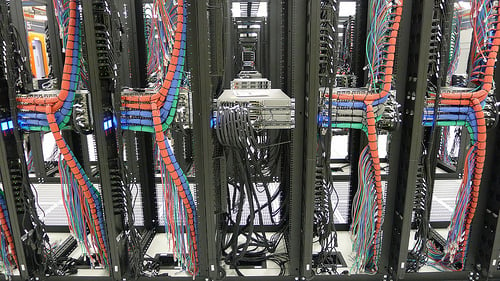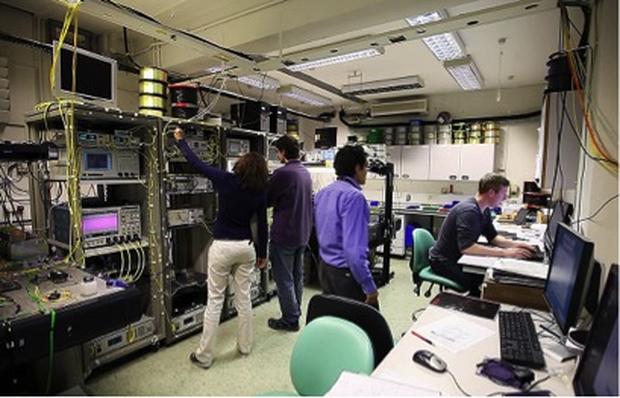
For Colocation Providers, Data Center Efficiency Is a Bit Different
February 9, 2015
Friday Fun Blog: Chocolate Farts Edition
February 13, 2015A University of London research team is extending the operating distance of fiber-optic cabling by doubling the existing throughput. Using photonic technology, the researchers are connecting dissimilar data centers (even ones on different continents) by using “game-changing” technology involving long distance fiber-optic cabling.
If you would like to read the technical-jargon-laden research report from University College London (UCL) entitled, “Spectrally Shaped DP-16QAM Super-Channel Transmission with Multi-Channel Digital Back-Propagation,” you may do so.
Luckily, our friends at Tech Republic were able to sit down and have Dr. Robert Maher, the senior research associate in the optical Networks Group of UCL’s Electronic and Electrical Engineering Department (and one of the paper’s authors), and have him explain it all a little more clearly.
Before we start, however, if you’re interested in the subject matter, but perhaps don’t know a whole lot about it (like me), check out this video to see the basics and get a little better understanding:
Did you know that 95 percent of all digital traffic is pushed through optical-fiber cables. As one could reasonably predict, the transmission of data through these cables over long distances can lead to a severe bottleneck. Especially cables that use a modulation format called Quadrature Phase Shift Keying (QPSK).
The Problem with Long-Distance Optical-Fiber Cables
If you know what QPSK is, then you must know about 16 QAM, or 16 Quadrature Amplitude Modulation, which can double the amount of digital traffic flowing through the same cable using QPSK. But, of course, there’s a catch. As Maher explains, “the problem we experience in optically-amplified links such as transoceanic crossings is that the signal power is periodically increased after every 50 to 100 km.” Therefore, all the amplification starts to talk to one another and distorts. So all you’re left over with is a garbled mess of data, unless you limit the amount of information passing through the optical-fiber cable. While 16 QAM can deliver more data, it fails at doing that over long distances (something which QPSK has no problem with, albeit with less information).
If someone out there could find the happy medium between QPSK and 16 QAM, this would be the ideal way to send data through optical-fiber cabling over a long distance—or as Maher puts it, it’ll be the “16 QAM super channel.”
What Is the 16 QAM Super Channel?
How this super channel would work is quite simple (yeah, right). Maher describes it: “We first generate a group of individual light channels at different frequencies, which can be coded using amplitude, phase, and frequency: to create a high-capacity optical signal to transport data.”
If you’ve been following along at home, the light channels will start to distort through interaction and the data will be distorted. So, rather than trying to eliminate the interference, the research team decided it was time to tackle the distortion—to undo it. And how else does one begin to undo data distortion? By building a high-speed super-recevier that can capture several light frequencies at once and converting them into electrical signals, of course.
The next step is when the researchers became really creative. Those converted light frequencies which were turned into electrical signals repeat the trip through the cable, this time virtually on a PC. Maher explains, “the idea is to replicate the inverse of the distortion that the optical signals experienced when they physically traveled over the fibre. This is done using advanced digital signal processing that emulates the fibre cable numerically. The captured channels are then sent on the journey again, but this time in the digital domain.”
Stick with me here, this undoes the distortion. The amplification needed to transmit the data using the 16 QAM method is virtually undone, allowing the cable to transfer more data than the QPSK method over the same distances.
What’s Next For Long-Distance Fiber Optics?
As internet traffic grows unrestricted and exponentially, the infrastructure will have to keep up or the internet will travel about as quickly as an 18-wheeler on the 405 freeway during Los Angeles rush hour (see: not at all).
New methods for optical-fiber cable data transfer must be paramount, especially transoceanic. The 16 QAM super channel is a great start and should last many years, but down the road newer innovations will have to be implemented—if not swapping out older infrastructure for newer.
It’s nice to know that there are researchers like Dr. Maher and his team that are capable enough to figure these problems out so that you can get your daily fix of the Colocation America Blog in a timely manner and not be stuck in the rush hour traffic of the internet.

